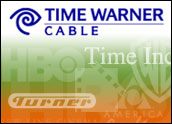
For advertisers, the mobile Web is full of possibilities — and problems.
U.S. adoption of the mobile Web lags behind European and Asian countries. Closed systems have hindered application development, as has the field’s wide array of competing standards, platforms and browsers. Small screens necessitate an alternative approach to the standard banner and sidebar ad strategies.
Overcoming these challenges can mean a big payoff for advertisers, particularly those selling to a local consumer market. Ads found by desktop surfing can target by interest; ads set on a mobile platform can track by location as well. Hitting a consumer with a well targeted mobile ad can bring in customers who are interested, geographically close by, and already on their feet and shopping.
The E-Commerce Times spoke with Jeff Torgerson ofIdearc, a multi-platform advertising provider. As senior product manager, Torgerson is responsible for driving his company’s mobile strategy and products.
E-Commerce Times: The U.S. has mostly lagged behind other parts of the world — namely Asia and Europe — in terms of consumer acceptance of mobile handset Web features. Why do you believe that is?
Jeff Torgerson:
I think there’s a key difference in the U.S. versus Asia and some other markets, in that the PC has much deeper penetration in households in the U.S. market. Most households in the U.S. have PCs; a lot of them have multiple PCs. And if you look in especially Asian and some other markets, the PC market is not so deep. Individual users are accessing the Internet and getting their Web applications all done through mobile devices. And the open networks that we’re talking about in the U.S. now aren’t essentially fully open in other markets, but there’s a lot more third-party development. Look at what NTT DoCoMo has done, as far as having third-party developers bring applications onto their devices and get them out to users.
The actual network speeds over there couple with that. They basically bring a much better user experience for the end consumer. That has got them to drive basically away from household PC usage and toward mobile usage out and about, including things like location-based services.
ECT: We’re seeing sort of a trend toward open networks over here too. Do you think opening networks here will lead to a wider use of Web applications on mobile handsets in the U.S.?
Torgerson:
I do believe that opening up networks and getting more people developing can help out. If you look at just pure opening of the networks — like with Verizon’s press release about their network opening up, then AT&T’s follow-up — really getting additional devices on the network is only one point of it. You actually start having to get additional applications developed, and the base operating system that can be running those [has to expand]. Look at the Open Handset Alliance and the Android platform, and what they’re trying to build out.
Couple those thing together, and I think you’re going to see over the next couple of years a lot more things branching out.
ECT: How about higher data transfer rates with wider use of 3G networks — is that going to play into this as well?
Torgerson:
If you look at pure content adoption, I believe definitely it does — you look at people using mobile TV and things of that nature. … Idearc has released video ads as part of our product line. So we can start bringing that sort of stuff to the mobile product, and as the broadband speeds get quicker in the devices, those things become essentially mobile-enabled and better for consumers — and better for advertisers as well.
ECT: It looks like the mobile Web is going in two different directions. There’s the true Internet experience on handsets like the iPhone, which tries to give you the most desktop-like browser it can on a small screen. But then there are also phones that de-emphasize the browser in favor of Web-enabled features like map applications, social network mini-apps, music services, etc.– it’s all built for handset use specifically. Which of these directions has a better future?
Torgerson:
In the short term, if you look at what thick-client applications are able to provide, [they] provide a much richer user experience. From a consumer standpoint, if you’re trying to use a device and you’re struggling with it, it’s going to be something you’re not very willing to adopt. So when I look at the iPhone example that you talked about, sure, the Safari browser on the iPhone can bring you the “real” Internet, as they call it. But if you’ve actually spent any time with it — and I have a device myself — you’re able to go to any Web site that you want. When you have content and a user experience that’s optimized for the device that you’re working on, it’s always a much more engaging and more compelling experience.
Especially when you start looking at trying to monetize those applications, which obviously everybody’s trying to do, you can start leveraging stuff a little better if you have a good user experience and can drive consumers to the data they need and then actually get advertisers in place where it makes sense. You struggle when you’re just trying to throw up a Web page on a small device with a small screen and trying to pan around and scroll to see stuff. It just doesn’t work quite as well.
ECT: The small screen question plays into advertising as well. In terms of screen real estate, users only have so much screen to use when they’re trying to find the content that they’re actively looking for. How does advertising get into that space when it’s already pretty crammed on that screen as it is?
Torgerson:
With the product we have, we really focus on relevancy for the consumer, and that’s the key thing you need to pay attention to up front as you’re building applications. If you take the experience that we’ve had on the Web, with people throwing banner ads and a lot of clicked advertising on the sidebars, it just doesn’t work in a mobile experience, like you mentioned.
We’ve taken the approach that you look at how users are actually consuming the application, whether they’re doing a keyword type search or a categorical type search, and you figure out what types of advertisers can work in those scenarios. So on a keyword search, if you have advertising that makes sense from a pay-per-click or a pay-per-call method that you can actually bring into the results, that’s fine — because it’s good, relevant results for the users and you can still provide value to your advertisers. If you look at, say, categorical search, we actually took some time on our application to pare down the categories that you would be finding on the Web.
An example would be if you’re searching for coffee when you’re out and about. [With] a categorical search on our product, you’re not going to be bringing back coffee wholesalers, the reason being that you’re probably, in a mobile environment, not looking for those sorts of things. You’re not in a research mode, you’re in a transaction mode to find coffee, probably. What we do is look at those categories and how you can actually sell into those and bring advertiser value to a categorical search — but then bring something to the consumer that is actually engaging to them.
ECT: There are so many mobile browsers, operating systems, carriers and devices on the market right now. How is the mobile marketing industry dealing with such a broad array of standards out there?
Torgerson:
It’s definitely a challenge. I think back to the old browser war days when you had Netscape and IE as the two main browsers. You’d try to visit a Web site and you’d get the error message saying, “This site is optimized for IE.” At least in those days, people were telling you what they were optimized for, and you really only had a couple choices.
The combination you have today is a series of devices that are either WAP (wireless application protocol) or XHTML (Extensible HyperText Markup Language) devices. Then you look at it even as a browser manufacturer, so you look at an open wave browser that may be deployed on multiple handsets. Based on carrier configurations, you even have different experiences across devices with the exact same version of the browser. So it compounds things greatly when you’re trying to build applications.
The problem with that is, as you’re trying to bring out applications to market and bring a good user experience, unless you have deeper pockets to spend the time and build across all those devices and make it work for the user in the most optimal fashion, you have a lot of developers who are bringing applications to market at the lowest common denominator. That’s basically translating to poor user experiences. From an end-user perspective you’re not getting exactly what you want out of the application — and from an advertiser — if you’re trying to provide advertising on these devices. You’re not getting much value out of it, because people aren’t very engaged in staying on the device.
From our standpoint, you need to focus on the key devices and look at market penetration for those devices, and try to build out experiences that make sense. The problem in the market that I see is that unless you have resources to be able to do that, you might have a fantastic product with some great ideas to bring to market, but if you don’t have the ability to deploy that across multiple devices, you’re never going to get good penetration there. …
ECT: Are there any advertising opportunities that the mobile Web has that the desktop Web doesn’t or hasn’t yet explored?
Torgerson:
I definitely believe so. If you look at the product that we’ve had to market for a year and a half now, we’ve actually focused on the get-go on location-based service. We really feel that when you’re out and about, where you are is key to you, obviously. There are certain things you’re willing to drive some distance for and certain things you’re not willing to drive for. So the application being able to know where you are — and react to that — is important.
Initially, when we deployed on Sprint Nextel for our first deployment, we had essentially the same thing Google has right now with the MyLocation feature, the ability to find out where you are even if your device isn’t GPS-enabled. Think of it from a traveling standpoint — you go into a new town and you need to find dinner, for example. You don’t necessarily need to know your exact address; you need to know I’m roughly here, and where’s the closest restaurant that I want to find. …
If you start looking at having location-based services available and extend it to the advertising model, you can start doing things. … If somebody’s willing to click or somebody’s willing to call your business, how valuable is that to you? If I can guarantee I’m bringing people to your doorstep, how valuable is that to you? You start to extend the location-based services into the advertising model. I think it can provide a lot of value for the advertising relationships there.






















































Social Media
See all Social Media